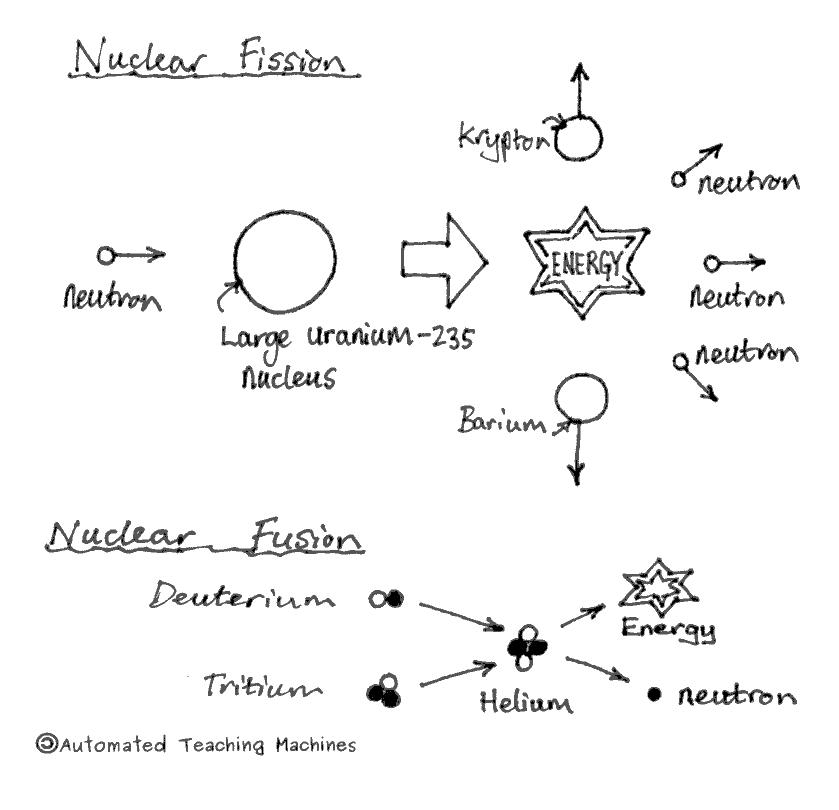Nuclear Fission and Fusion
Nuclear power stations split atoms in a process called nuclear fission. An incoming neutron splits the uranium (or plutonium) nucleus, releasing energy and more neutrons. Mass is converted into energy during this process.
Control rods are used to absorb neutrons and control the speed of the reaction. No carbon dioxide is released into the atmosphere.
A coolant is circulated around the reactor to remove heat and make steam which is used to generate electricity using turbines and generators.
The sun and other stars generate heat from nuclear fusion. Two hydrogen nuclei fuse to create a helium nucleus. Again, mass is converted into energy which is released as heat and light.


